Gather the ingredients for Spanish-inspired tuna salad with white beans and oranges
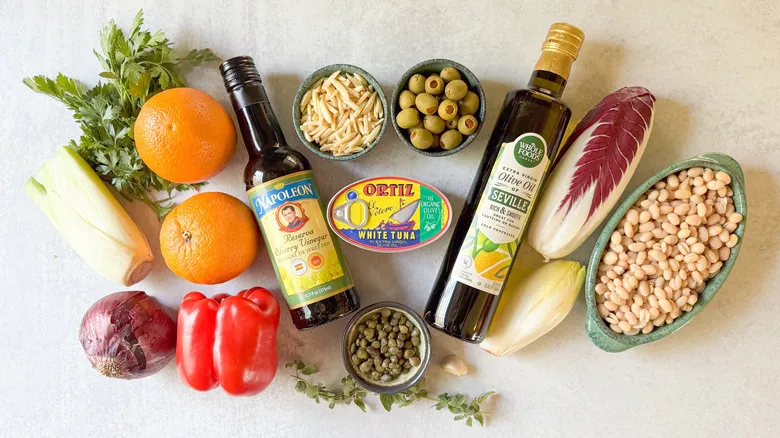
In this recipe, Kinnaird opts for her preferred canned Spanish tuna, which is packed in olive oil and made by Ortiz. You can substitute it with any high-quality white tuna in olive oil. The tuna is combined with diced red onion, sweet red bell pepper, fresh fennel bulb, sliced Manzanilla olives stuffed with pimentos, and capers along with a bit of their brine. Canned white navy beans (or other small white bean varieties) contribute a creamy texture to the salad—just remember to rinse them beforehand.
For the dressing, you'll want to use a premium Spanish extra-virgin olive oil (for authenticity), sherry vinegar, minced garlic, and fresh oregano. Juice from Valencia oranges (or similar varieties) is squeezed in while removing the segments from their peel and membranes. Since the olives and capers are quite salty, you likely won’t need to add extra salt unless you prefer it. The salad is topped with toasted slivered almonds and freshly chopped Italian parsley, and it’s served on a bed of red and white Belgian endive leaves.
Step 1: Slice the olives
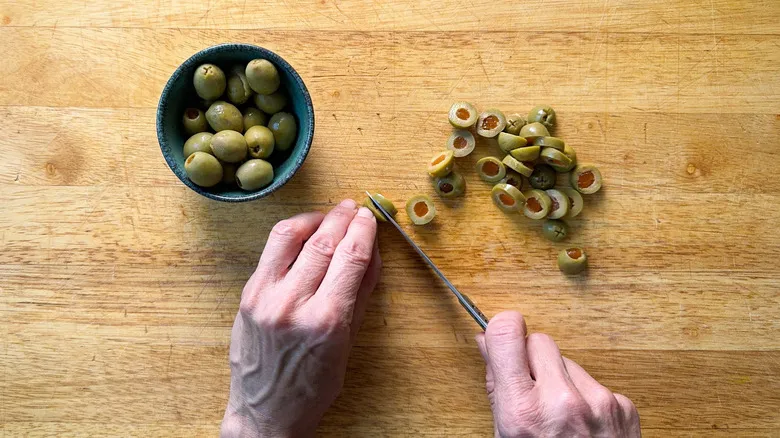
Cut the olives into circular pieces.
Step 2: Cut the ends off of the oranges

Trim the ends off both oranges to reveal the fruit inside.
Step 3: Cut the peel away from the oranges

Place the orange on one flat end on a cutting board and gently remove the peel and pith from the flesh.
Step 4: Release the orange segments from the membranes

Utilize a sharp knife to slice between the membranes, allowing the segments and juice to fall into a bowl. Squeeze out any remaining juice from the membranes and peels. Move the segments to another bowl.
Step 5: Make the dressing
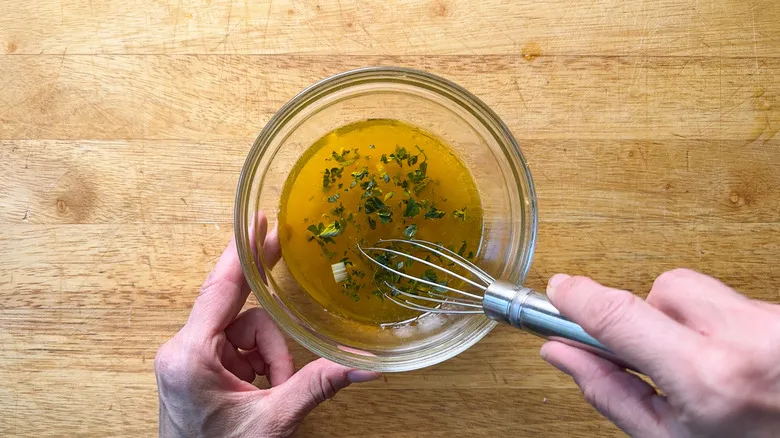
Combine the olive oil, sherry vinegar, garlic, and oregano with the orange juice to create the dressing. Set it aside.
Step 6: Combine the salad ingredients

In a spacious bowl, mix together the sliced olives, beans, fennel, capers, caper brine, red pepper, and onion. Incorporate the tuna along with the oil from each can.
Step 7: Add the dressing
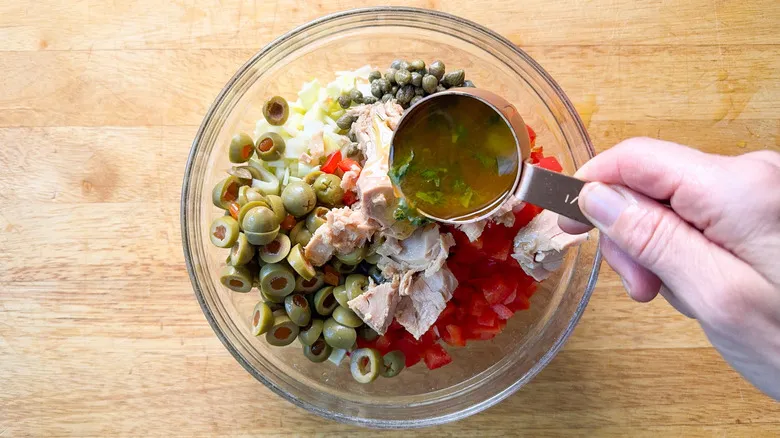
Incorporate ? cup of the dressing into the tuna mixture.
Step 8: Toss the salad
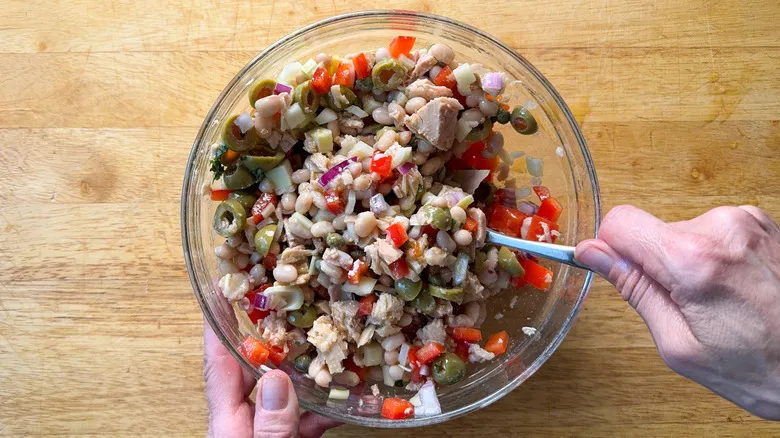
Gently mix together and set aside.
Step 9: Add the almonds to a skillet
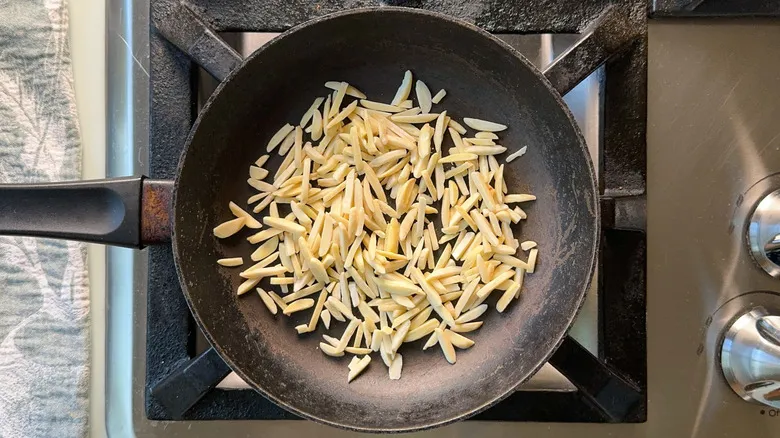
Place the almonds in a small skillet and heat over medium.
Step 10: Toast the almonds

Toast the almonds, stirring often, until they turn golden brown (approximately 5 minutes). Transfer them from the skillet to cool.
Step 11: Arrange the endive leaves on a platter
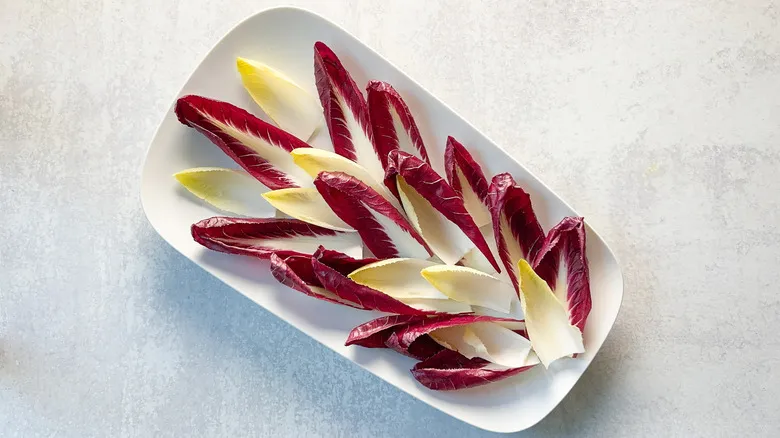
To prepare the salad, place the endive leaves on a spacious platter or a shallow serving bowl.
Step 12: Add the tuna salad
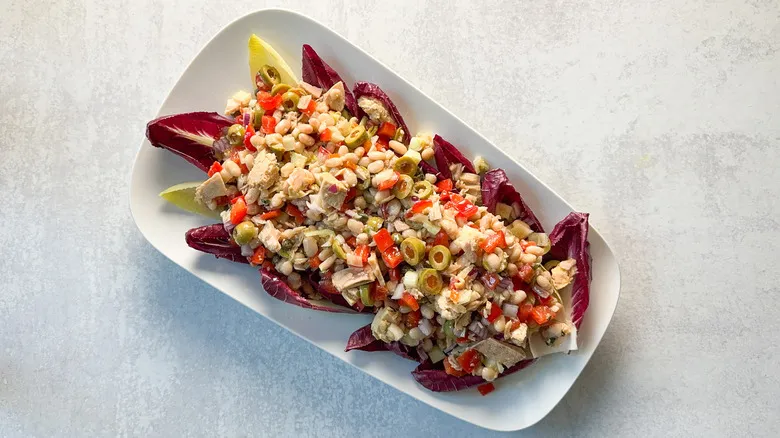
Place the tuna salad mixture on top of the endive.
Step 13: Add the orange segments

Incorporate the set-aside orange segments.
Step 14: Add the almonds and parsley

Dust the toasted almonds and chopped parsley over the dish.
Step 15: Drizzle on the remaining dressing

Complete by drizzling the leftover dressing on top.
Step 16: Serve the Spanish-inspired tuna salad with white beans and oranges
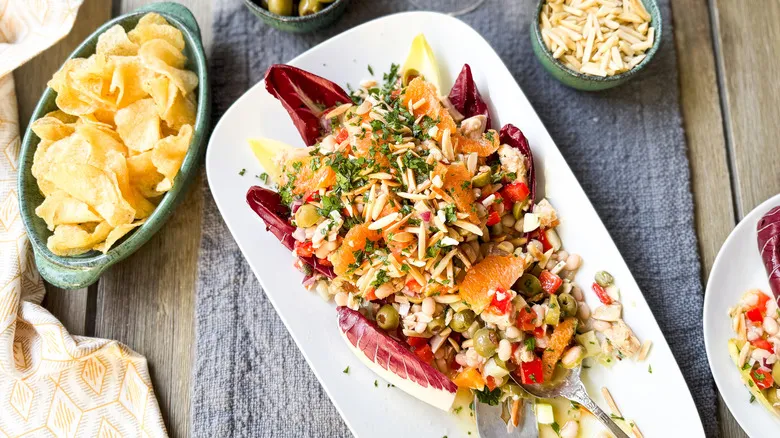
Serve the Spanish-inspired tuna salad with white beans and oranges right away.
What type of tuna is best for a tuna salad?
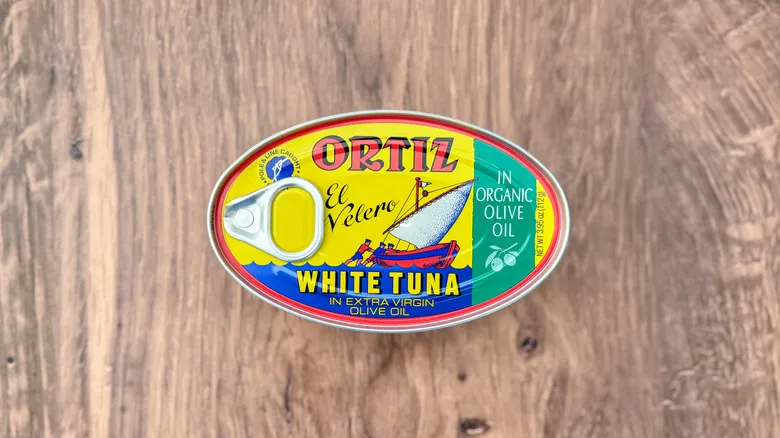
If you've purchased tuna lately, you might have observed that the canned fish section in grocery stores has changed significantly! There is now an extensive array of tuna options and brands available. You can find tuna packed in oil, water, salted, marinated, or even sodium-free. Additionally, there's the consideration of which type of tuna is the most environmentally friendly.
When it comes to flavor, nutrition, and ethical considerations, albacore, often referred to as "white" tuna, is an excellent choice for tuna salad. It has a mild taste and a firm texture that holds up well when mixed. Albacore also boasts a higher content of omega-3 fatty acids compared to other tuna varieties. Furthermore, it is a sustainable choice that is not at risk of overfishing. Kinnaird mentions that she has been enjoying Ortiz olive oil-packed tuna for years due to its exceptional quality and taste. Conservas Ortiz has its roots in Spain, dating back to 1891, and was officially established in 1956. The company has a long-standing commitment to quality and traditional fishing practices, with all tuna caught by hand. The white tuna used in Ortiz products is Bonito Del Norte, regarded as one of the finest tunas in Spain.
What's the difference between regular and Spanish olive oil?
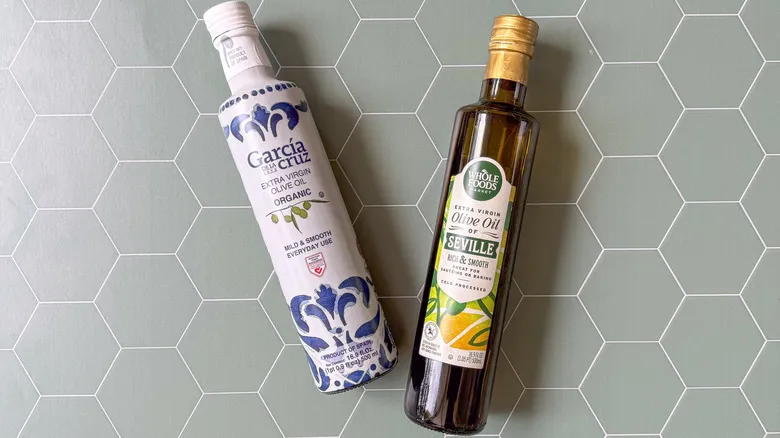
When people typically think of olive oil, Italy often comes to mind, renowned for its extensive use of the oil in various culinary applications. However, it may come as a surprise that Spain actually holds the top position in olive oil production. In 2023, Spain produced over 5.9 million tons of olive oil, nearly double that of Italy! Olives have been integral to Spanish cuisine for millennia, and the country has been crafting olive oil since the Roman Empire era. Spain's climate is perfectly suited for olive cultivation, boasting around 350 million olive trees. The region of Andalusia in southern Spain is the leading producer of olive oil globally.
So, what sets Spanish olive oil apart from that of other countries? Spanish olive oil is known for its exceptional quality and often exhibits a fruitier flavor profile compared to other varieties, thanks to the ideal growing conditions. The taste and color of Spanish olive oil can vary by region, influenced by the specific types of olives used. In Andalusia, for instance, hojiblanca olives impart a grassy flavor to the oil, while in Central Spain, Cornicabra olives are prevalent, lending a more bitter note. Overall, you can count on Spanish olive oil for its superior quality and rich flavor intensity.
Recommended

Sweet And Savory Crispy Buttermilk Chicken And Waffles Recipe

Cheesy Truffled Grit Cakes Recipe

PB&J: The History Of The Peanut Butter And Jelly Sandwich

Banh Mi Spiral Cut Hot Dog Recipe
Next up

